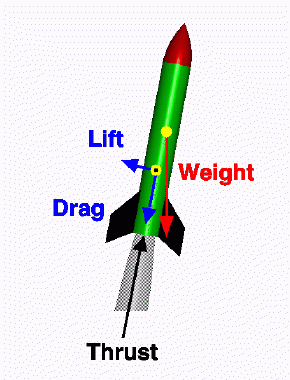David L. Akin is the Director, SpaceSystems Laboratory at the University of Maryland. He is also the author of “Akin’s Laws of Spacecraft Design.” He lists more than 40 laws, here are ten that I thought were directly applicable to software entrepreneurship, but the whole list is very funny and worth reading.
Ten Rules of Thumb for Startups From Akin’s Laws of Spacecraft Design
1. Engineering is done with numbers. Analysis without numbers is only an opinion.
Quantifying adjectives like small, mid-size, large, local, regional, slow, fast, etc..often helps you to focus your message and targeting efforts. Estimating dollar costs that prospects are incurring for a problem can be eye opening.
3. Design is an iterative process. The necessary number of iterations is one more than the number you have currently done. This is true at any point in time.
Strong competitors also go to school on your product design and seek to obsolete yours with their next version.
7. At the start of any design effort, the person who most wants to be team leader is least likely to be capable of it.
I think situational leadership where who is in charge changes depending upon the problem at hand is more appropriate for a founding team.
8. In nature, the optimum is almost always in the middle somewhere. Distrust assertions that the optimum is at an extreme point.
There are typical threshold effects both on minimum and maximum values that drive trade-offs into the interior of a range.
9. Not having all the information you need is never a satisfactory excuse for not starting the analysis.
Instead of trying to guess an average or nominal value, or in addition to a single estimate, run your calculations with an estimate of the 10th and 90th percentiles.
15. (Shea’s Law) The ability to improve a design occurs primarily at the interfaces. This is also the prime location for screwing it up.
 In particular interfaces with existing workflows and legacy applications are often critical to adoption.
In particular interfaces with existing workflows and legacy applications are often critical to adoption.
20. A bad design with a good presentation is doomed eventually. A good design with a bad presentation is doomed immediately.
Your ability to describe your product will influence whether people actually try it. Later, your word of mouth will have a larger influence, but in trying to earn the trust of early customers your presentation or demo is crucial.
23. The schedule you develop will seem like a complete work of fiction up until the time your customer fires you for not meeting it.
Just because you know that you are making it up does not mean that a prospect won’t take you seriously. Be careful of what you promise.
31. (Mo’s Law of Evolutionary Development) You can’t get to the moon by climbing successively taller trees.
The implications of this cut both ways:
- Sometimes it’s useful to build a simple prototype like a rocket sled or a scale model you can test in a wind tunnel.
- On the other hand systems that support dozens of users may not scale to thousands, and sales and marketing techniques that work fine for generating a handful of leads a month may not work for hundreds.
It’s interesting to see multiple overlapping organ functions that support human life from embryo to fully grown adult: e.g. spleen generates red blood cells until bones are large enough to house bone marrow that can take over.
38. Capabilities drive requirements, regardless of what the systems engineering textbooks say.
One under-anticipated aspect of this is that a startup’s ability to take business from an established firm will quickly make the startup’s technology advantage a targeted requirement by the larger firm.
Related Blog Posts
- Six More from Akin’s Laws of Spacecraft Design
- Dean Kamen on Good Design and Where to Begin
- Ten Design Thinking Quotes From Marty Neumeier
- “Better” is the Enemy of “Good Enough”
- How to Tell When Your Team Has a Workable Plan of Action
Image Credit: “Forces on a Model Rocket in Flight” by Tom Benson at NASA Glenn Research Center

Pingback: SKMurphy, Inc. Dean Kamen on Good Design and Where to Begin - SKMurphy, Inc.
Pingback: SKMurphy, Inc. Ten Design Thinking Quotes From Marty Neumeier - SKMurphy, Inc.
Pingback: SKMurphy, Inc. Building and Managing a Learning Process - SKMurphy, Inc.
Pingback: SKMurphy, Inc. Making Tea - SKMurphy, Inc.
Pingback: Six More from Akin’s Laws of Spacecraft Design - SKMurphy, Inc.